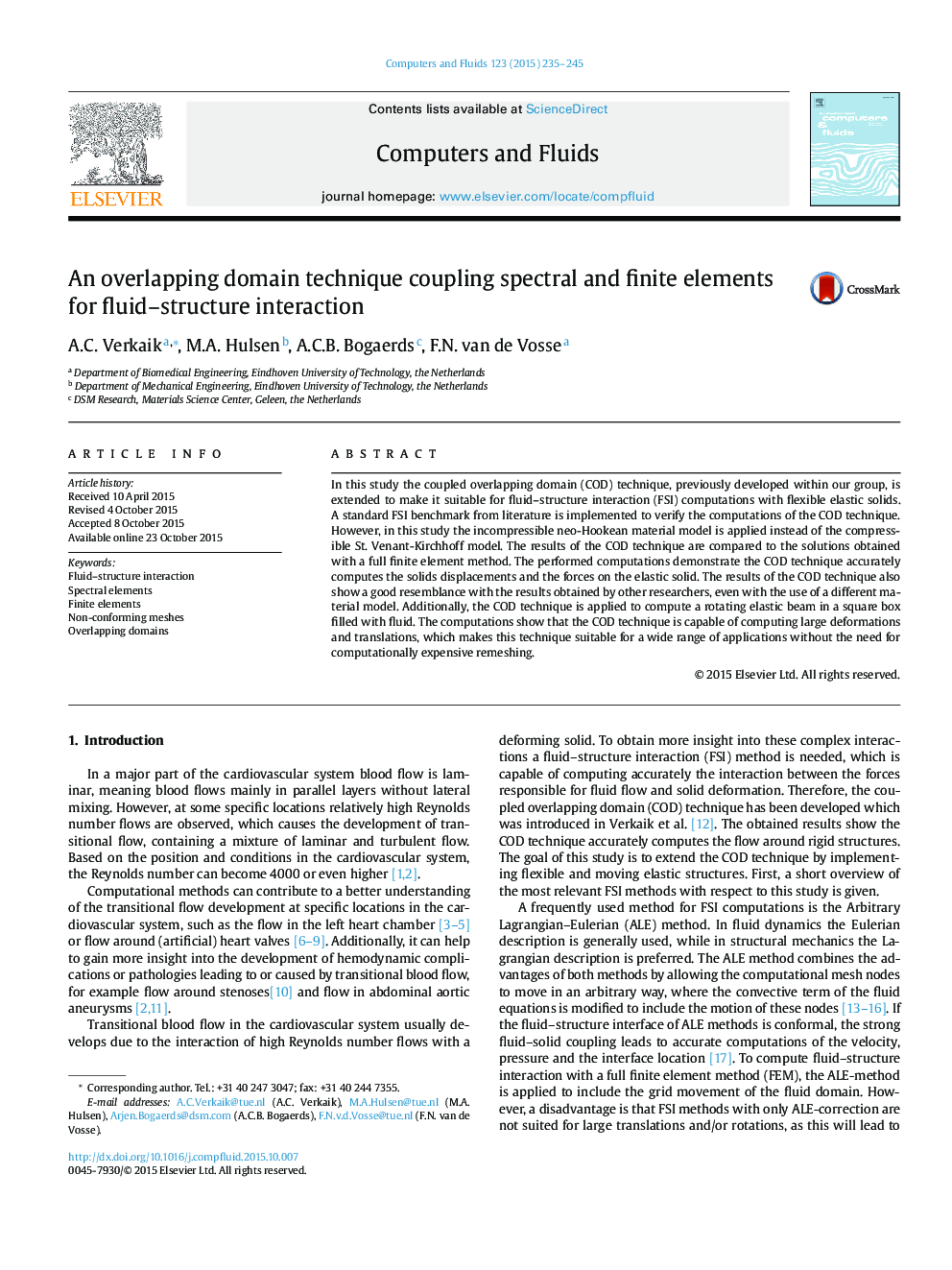| Article ID | Journal | Published Year | Pages | File Type |
|---|---|---|---|---|
| 761259 | Computers & Fluids | 2015 | 11 Pages |
•Extension of the COD technique to fluid–structure interaction with elastic solids.•FSI benchmark computations have been performed to validate the extended COD technique.•Rotating elastic beam application demonstrates the advantages of the COD technique.•It is accurate and stable for large structural translations without remeshing.•The COD technique has promising characteristics for a wide range of FSI applications.
In this study the coupled overlapping domain (COD) technique, previously developed within our group, is extended to make it suitable for fluid–structure interaction (FSI) computations with flexible elastic solids. A standard FSI benchmark from literature is implemented to verify the computations of the COD technique. However, in this study the incompressible neo-Hookean material model is applied instead of the compressible St. Venant-Kirchhoff model. The results of the COD technique are compared to the solutions obtained with a full finite element method. The performed computations demonstrate the COD technique accurately computes the solids displacements and the forces on the elastic solid. The results of the COD technique also show a good resemblance with the results obtained by other researchers, even with the use of a different material model. Additionally, the COD technique is applied to compute a rotating elastic beam in a square box filled with fluid. The computations show that the COD technique is capable of computing large deformations and translations, which makes this technique suitable for a wide range of applications without the need for computationally expensive remeshing.
